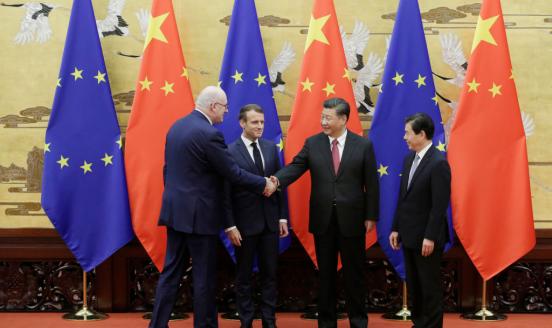Reading tea leaves from China’s two sessions: Large monetary and fiscal stimulus and still no growth guarantee
The announcement of a large stimulus without a growth target indicates that China’s recovery is far from complete.
It was hard to think of a more important gathering than last week’s ‘Two Sessions’, during which Chinese political leaders were to guide all of us as to the way ahead for the Chinese economy. While this yearly event is always important, this year’s was crucial. 2020 marks the end of two key cycles of economic planning: the current Five-Year Plan, and the end of the 10-year period during which the country aimed at doubling its income, which is the operational target to measure President’s Xi Great Rejuvenation plan. Expectations were running all the higher that the Chinese economy is reeling from unprecedented levels of uncertainties due to coronavirus epidemic – including delaying the event itself – compounded by the fact that China had shown a rather hesitant approach to stimulus since January.
The new guidance that emerged from the ‘Two Sessions’ marks a major departure from traditional economic management in China, as China’s leadership opted not to set a growth target. This also suggests rather low expectations for economic activity this year and probably the next, as hinted by the rather high unemployment target (6% last April).
Meanwhile, references to lower interest rates and a higher inflation target point to a much laxer monetary policy in the months ahead. In parallel, a large fiscal stimulus is to be expected, as authorities announced a nearly 40% increase in additional financing for local governments, from RMB 2.6 trillion last year (€334 billion) to RMB 3.75 trillion (€481 billion) in 2020, as well as an additional RMB 1 trillion (€128 billion) in special treasury bonds. The Chinese government had not resorted to this type of off-balance sheet bonds since 2007. The magic of it all is that the target for the fiscal deficit remains low for the sharp increase in bond issuance, namely at 3.6% of GDP in 2020.
The announcement of a large stimulus without an attached growth target worryingly suggests that China’s recovery is far from complete, two months after the COVID-19 epidemic was brought under control in the country. This is especially true for the demand side. External demand remains extremely weak as virtually the whole world has also been hit by the pandemic. Even more worryingly, the meagre retail sales and looming deflationary pleasures clearly indicate that domestic demand also remains feeble.
The need for more stimulus is thus a no-brainer and Premier Li’s announcement should be welcomed. If the stimulus is reoriented toward targeted and more productive investment, growth should be able to resume more easily but perhaps with lingering unemployment. The creation of a stronger welfare state seems warranted to maintain income levels high enough to protect households and safeguard domestic consumption.
Higher debt
However, there no such thing as a free lunch. The mirror of additional stimulus is more leverage. Without a privatisation programme, all signs point to higher public debt because of the stimulus announced. The pre-announced land reform should help generate wealth for the rural population but it is hard to see how that would reduce public debt. If anything, it might even raise it, as there might be a transfer of wealth from local governments, who have less land sale revenue, to the rural population.
We estimate that China’s consolidated fiscal deficit has hovered at around 8% in the past few years, which implies that public debt was piling up even before COVID-19 hit the Chinese economy. While most of the increase is associated with local government financing vehicles, it seems clear that China’s fiscal space is not as large as it used to be. Considering that a significant part of China’s corporate debt is in the hands of state-owned companies (about 60% of listed companies), Chinese public debt on a consolidated basis would be higher than that of US or most European countries. The good news, though, is that China has enough domestic savings to hold this debt domestically and it will be able to reduce the size of the debt once the negative economic consequences of the pandemic are fully under control. In this regard, one should expect financial repression, supported by capital controls, to become even more pervasive, to cushion the negative impact of further accumulation of public debt.
Premier Li has so far not offered guidance on how this money will be spent. Several actors are pushing to use this opportunity to further enhance China’s digital infrastructure. While clearly welcome, this strategy might not spur the necessary job creation needed to sustain employment and disposable income. Chinese leaders might therefore be tempted to give up on such high hopes and use the stimulus for more labour-intensive sectors such as infrastructure and real estate. However, pervasive over-investment in those sectors among others means it is difficult to find profitable projects to invest in.
Supporting domestic demand
Other measures will be needed to keep workers’ disposable incomes stable for a more targeted and productive stimulus. The most obvious solution is to ramp up China’s welfare state, not only out of fairness or pure populism, but above all to ensure economic efficiency. Better allocation of resources can cushion China’s unavoidable structural deceleration and the productivity gains need to be used to support household income through fiscal transfers so that China’s long-standing pursuit of a consumption-led growth model can be achieved. There is no better way for a society to rejuvenate than to be able to provide a sufficient safety net for the losers from economic transformation, while moving up the ladder through innovation. With such a policy mix, the pandemic might indeed pass into China’s history as the opportunity that the leadership grasped for the Chinese economy to modernize itself.



